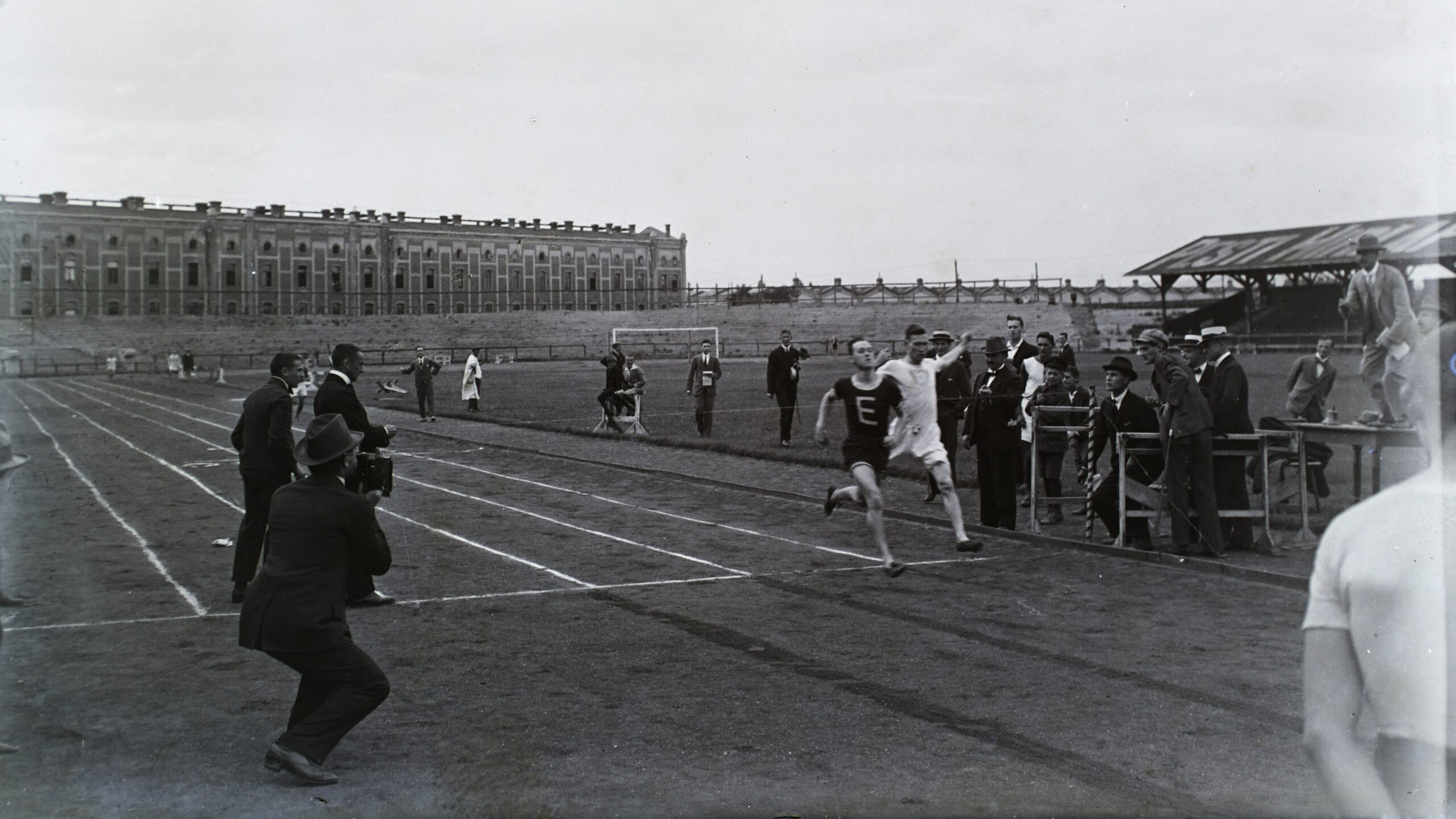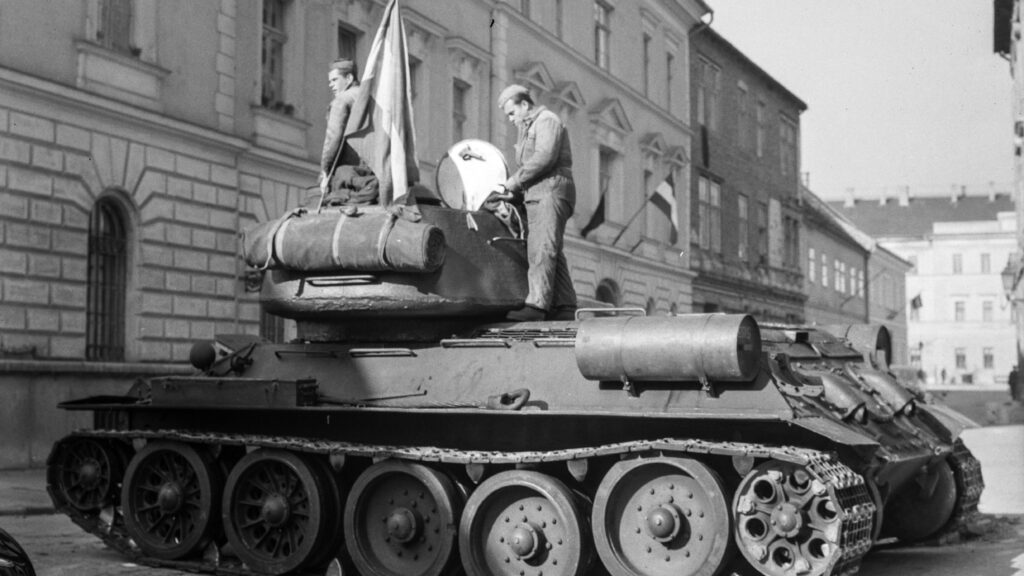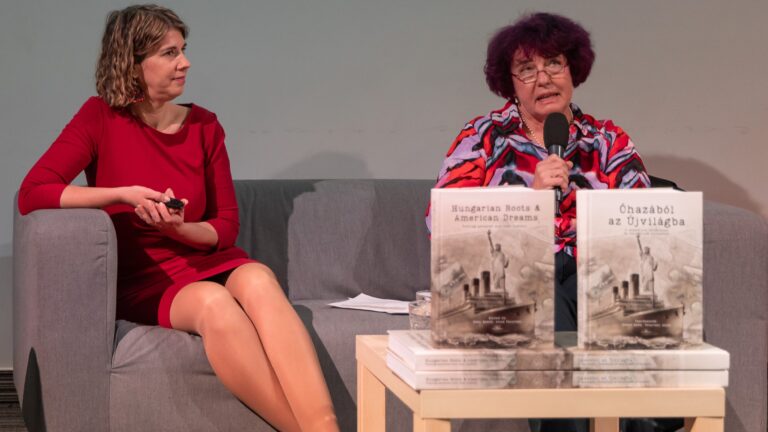The Red Terror and the Romanian occupation of 1919 were followed by the entry of the right-wing National Army and Miklós Horthy’s self-declared ‘counterrevolution’. This process ultimately brought nearly two decades of peaceful and developing times to Hungary. However, it is impossible not to mention the fact that at its birth, the so-called White Terror claimed more than a thousand victims—1,169 according to the scholarly literature.
The White Terror was largely a series of events in the countryside, and although atrocities and murders did occur in Budapest as well, these were not characteristic of the 1st District. Nevertheless, at least one murder is known to have taken place there, specifically in the Nándor Barracks on Kapisztrán Square (the building today serves as the Hungarian Ministry of Defence). This was the case of László Harmat, the MTK (Hungarian Circle of Physical Practitioners—a sport club widely regarded as Jewish-affiliated) runner and three-time national champion at 800 metres.[1]
In connection with the ‘disappearance’ that happened on 9 May 1920, Harmat’s parents remained in continuous contact with the authorities, and their desperate correspondence has been preserved in detail by the Military History Archives. The very first letter in the matter was written by Mrs Miksa Harmat (address: 10 Kisdiófa Street, Budapest) to the Ministry of Defence:
‘They abducted my child, László Harmat, a 19-year-old secondary school student who had been barred from taking his final examinations by the Royal Hungarian Ministry of Religion and Public Education because of his behaviour during the proletarian dictatorship…on the afternoon of the 9th of this month, Sunday, from the sports grounds of the Hungarian Athletics Club on Margaret Island, and despite my most diligent search I have been unable to find any trace of him since. According to eyewitnesses, he was taken to the barracks on Úri Street, where, as is well known, the Prónay-group is stationed. I inquired there as well, but they refused to provide any information, claiming they had no official knowledge of the case, so only the suspicion of the frequently mentioned and infamous “individual action” can be presumed. The pain of a mother’s heart needs no further illustration.’
A few comments: the ‘Prónay-group’ was a far-right military group that took part in the scouring of Communists from Hungary after 1919, but also targeted innocent Jews. The group, at the time, was stationed in the Nándor Barracks. Úri Street was in the Buda Castle as well, so Mrs Harmat was not entirely mistaken. The contemporary press regularly referred to antisemitic murders as ‘individual actions’.
‘The pain of a mother’s heart needs no further illustration’
At the same time, his father wrote a letter to the Ministry of the Interior in which he detailed the arrest:
‘My son, László Harmat…went…to run, but before he had even undressed, two officers sent a civilian boy for him, saying they wanted to speak with him. He went after them, and what they spoke about is unknown, but according to Ernő Braun…, my son defended himself. It was in vain: the two aforementioned officers forced him into a carriage drawn by a team of horses and took him to the barracks on Úri Street, and since then he has disappeared without a trace.’
It should be noted here that Ernő Braun was also an MTK runner, so it is not entirely unrealistic that he may have followed the carriage up to the Castle District.
The authorities, for their part, appear to have contacted the ‘Prónay-group’ immediately, but the reply was that the 1st Szeged Hunter Battalion (the group’s official name), stationed in the Castle barracks, had ‘no knowledge’ of the boy. However, Albert Váry, the Royal Hungarian Chief Prosecutor, did not let the matter rest. In his memorandum to Major Daróczy, head of Department C of the Ministry of Defence, he wrote the following in his letter of 9 June:
‘The father has now again complained to me that, since his son has been missing for a month, he is on the verge of losing his mind if he does not learn what has become of him…According to his statement, the coachman who took his son to the barracks, as well as a friend of his son, saw that he was taken into the Barracks. I respectfully ask Your Excellency to be so kind as to ascertain what has happened to László Harmat and why he is not being handed over either to the military or to the Royal Civil Prosecutor’s Office. Allow me to repeat before Your Excellency the request I made earlier, that the question of under what conditions military personnel may arrest civilians be regulated with the utmost urgency. First of all, it should be regulated so that at the very least the relatives know by whom, on what grounds, and where the civilian in question is being taken.’
It appears that no reply was received in the case, but Harmat’s father continued his search. For this reason, on 28 June, Váry wrote another letter: in it, he stated that Miksa Harmat ‘complains that, according to his information, his son, László Harmat, was beaten so severely with a rubber truncheon by a certain Corporal Takács, the commander of the detention cell in the Nándor Barracks, that he died the next day. According to his information, this occurred in mid-May.’ The question for him at this point was whether ‘the missing László Harmat was beaten to death in the Nándor Barracks’. Next to the document, the following reply appears with Prónay’s very own handwriting and signature:
‘I hereby forward the above report, and at the same time report that it has been established that the person in question did not enter the barracks. Major Prónay, battalion commander.’
‘Your son has disappeared, and I advise you not to dig into the matter, or you will be next’
Finally, on 9 August, Mrs Miksa Harmat wrote the following: ‘on 7 August 1920, at the military court on Margit Boulevard, Captain Bauer, military judge, in the presence of Dr Ányos, attorney, Andrássy Avenue 27 I/1, informed me that Captain Gosztonyi, military judge, had stated to him that he possessed a protocol according to which my son had been murdered, or had died from his wounds. Consequently, I request from the competent authorities the release of my son’s body.’
The mother also dutifully promised that ‘in my efforts to recover my son, I have thus far appealed only to the Hungarian authorities, and I will not turn to anyone else in the future.’ Despite this, she received no substantive reply.
The father, however, continued to pursue the case even years later. In 1922 the Jewish weekly Múlt és Jövő published his letter under the title ‘Who Knows Anything about My Son’s Body?’ According to his letter, although a ‘state secretary’ at the Ministry of Justice received him and promised an answer, he never received one. Through his own investigation, however, he learned ‘from a gentleman from Beregszász, who had been imprisoned in the same barracks at the time’, ‘that my son is no longer alive’.
‘He told me that my son was murdered the very same day he was taken in, and the next evening his body was carried away on a cart, though he did not know where. Later, I learned from several of his fellow prisoners, who had been held with him, the tragic circumstances of his killing. While he was forced to scoop simultaneously from two large bowls of cooked beans placed before him, he was beaten front and back with heavy sticks. If he stopped eating for even a moment, they intensified the terrible blows, until finally he perished under the torture.’
According to the article, Miksa Harmat requested the release of his son’s body and the ordering of an investigation, but instead of a reply, a few days later an ‘unknown’ man approached him in a café and said: ‘Your son has disappeared, and I advise you not to dig into the matter, or you will be next!’
The family preserved his memory; in 1925 Miksa Harmat donated 50,000 Hungarian crowns to the Budapest Jewish Boys’ Orphanage ‘in memory of the birthday of the late Laci Harmat’.
[1] This article is based on the following sources: Hadtörténeti Levéltár (Military Archives), HM ELN C 1920 100.247. and Jövő (Bécs), 3 Feb 1922, and Egyenlőség, 30 Aug 1924.
Related articles:







